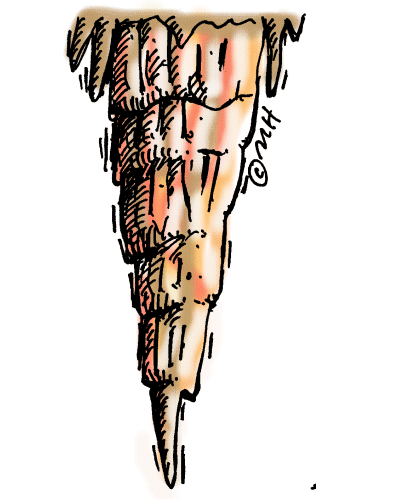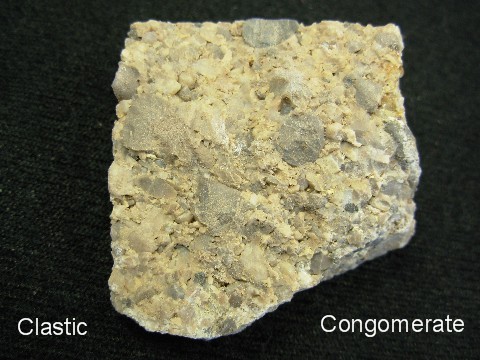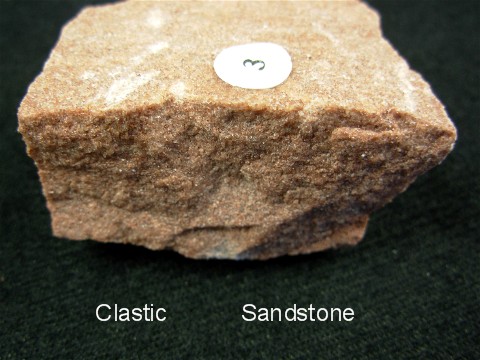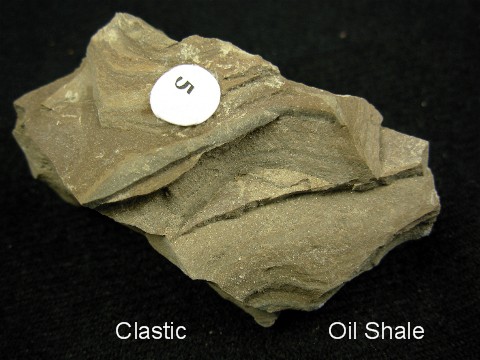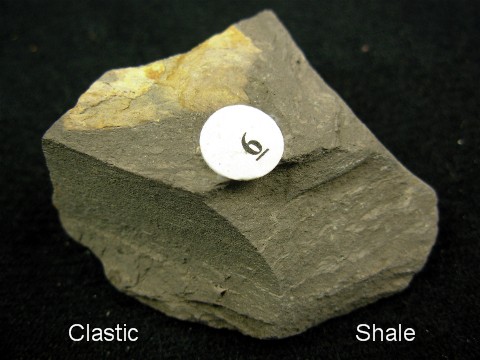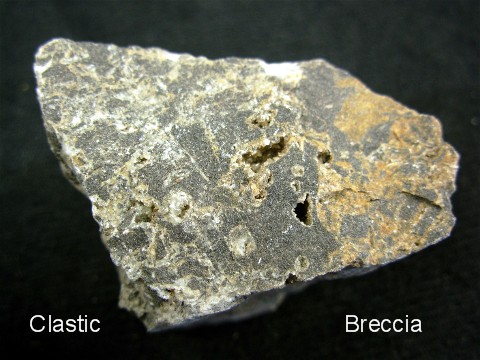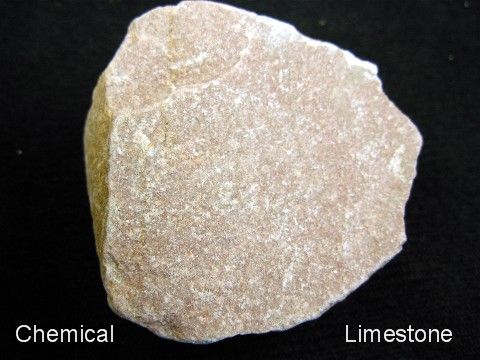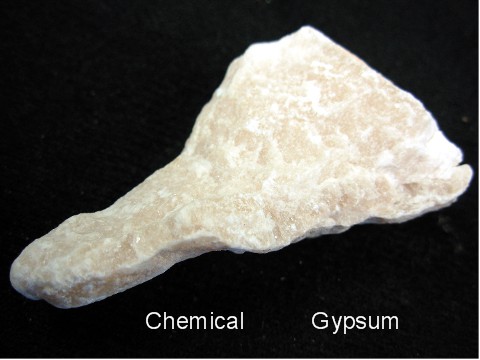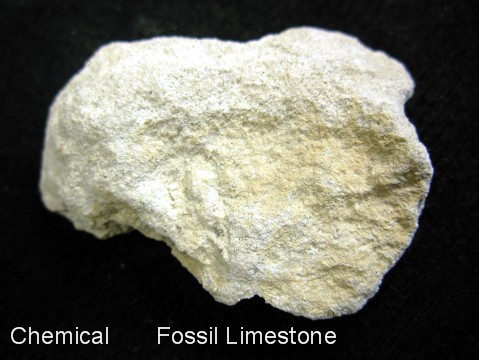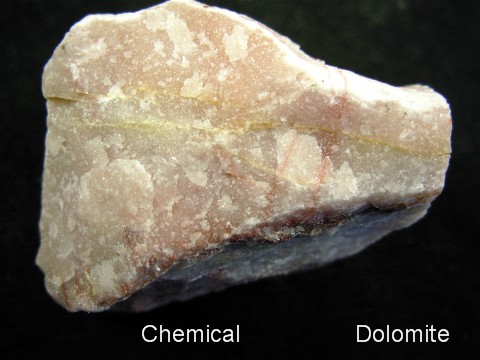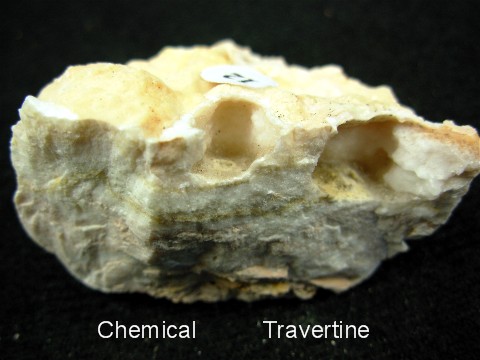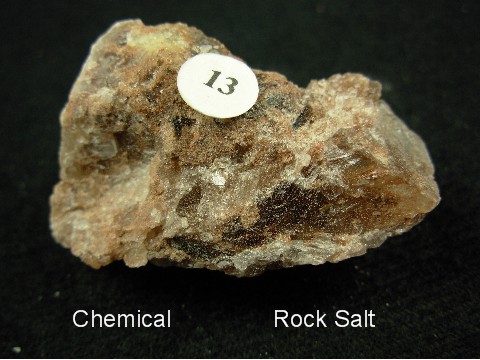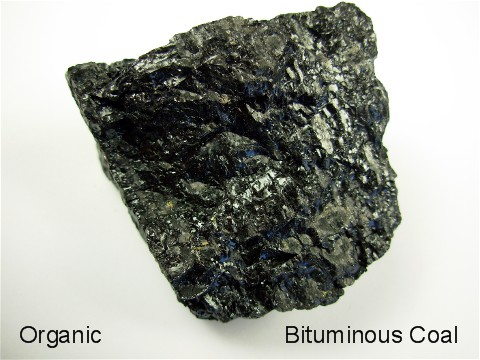Sedimentary Rocks
Sedimentary rocks...The earth's surface is constantly being eroded. This means that rocks are broken up into smaller pieces by weathering. Conditions such as wind, water, and ice turn small pieces of rock turn into pebbles, gravel, sand, and clay. They tumble down rivers and streams. These pieces settle in a new place and begin to pile up and the sediments form flat layers. Over a long period of time, the pieces become pressed together and form solid rock called sedimentary rock. Most sedimentary rocks form under water. Most of the earth has been covered by water some time in the past.
70% of the earth is currently covered by water. Sedimentary rocks are very common all over the world. It is also interesting that 70% of all rocks on earth are classified as sedimentary rocks. Fossils are found most often in Sedimentary rocks. Fossils are the remains of plants and animals from millions of years ago that got mixed in the sedimentary process.
Clastic sedimentary rock Clastic sedimentary rocks are the group of rocks most people think of when they think of sedimentary rocks. Clastic sedimentary rocks are made up of pieces (clasts) of pre-existing rocks. Pieces of rock are loosened by weathering, then transported to some basin or depression where sediment is trapped. If the sediment is buried deeply, it becomes compacted and cemented, forming sedimentary rock.
Clastic sedimentary rocks may have particles ranging in size from microscopic clay to huge boulders. Their names are based on their clast or grain size. The smallest grains are called clay, then silt, then sand. Grains larger than 2 millimeters are called pebbles. Shale is a rock made mostly of clay, siltstone is made up of silt-sized grains, sandstone is made of sand-sized clasts, and conglomerate is made of pebbles surrounded by a matrix of sand or mud.
Organic sedimentary rock Organic sedimentary rocks form when large numbers of living things die, pile up, and are compressed and cemented to form rock. Accumulated carbon- rich plant material may form coal. Deposits made mostly of animal shells may form limestone, coquina, or chert.
Chemical sedimentary rock Chemical sedimentary rocks are formed by chemical precipitation. The Stalactites and Stalagmites you see in caves form this way, so does the rock salt that table salt comes from. This process begins when water traveling through rock dissolves some of the minerals, carrying them away from their source. Eventually these minerals can be redeposited, or precipitated, when the water evaporates away or when the water becomes over-saturated with minerals. Here is a "trick" to remember the differences between Stalactites and Stalagmites: Stalactites hang tight to the ceiling; Stalagmites make mounds on the floor.
Here are some things to look for in sedimentary rocks.
Here are some photographs of some common sedimentary rocks. Look for these same forms, patterns and structure in the rocks you find during your rock hunting trips. See…you have made another step on the road to becoming a genuine rockhound. When you find your rocks, you can number them as we do and make a list to remember their names.



